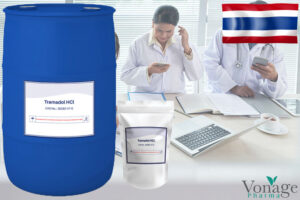Methadone, traditionally known for its role in opioid dependency treatment, has increasingly garnered attention as a valuable option for managing neuropathic pain. Pharmaceutical providers must understand the evolving usage, benefits, and safety considerations of methadone for neuropathic pain to effectively meet patient needs and comply with regulatory standards. This post delves into clinical guidelines, real-world statistics, and Vonage Pharma’s product offerings tailored to support providers in Bangladesh and beyond.
Understanding Methadone’s Role in Neuropathic Pain Management
Neuropathic pain arises from nerve damage and differs fundamentally from nociceptive pain, often proving resistant to conventional analgesics. Methadone offers a dual mechanism by acting both as a μ-opioid receptor agonist and an NMDA receptor antagonist, which contributes to its effectiveness against neuropathic pain.
Clinical data reviewed in recent systematic studies found:
-
In trials involving 105 patients with various neuropathic pain conditions, 11 out of 29 participants taking methadone achieved at least a 30% reduction in pain, compared to 7 out of 29 on placebo. (Pubmed)
-
Significant reductions in average and maximum pain intensity were reported, particularly at doses around 20 mg daily.
-
Methadone showed better efficacy than placebo for pain intensity and functional outcomes, though some comparisons favored morphine in specific studies.
-
Adverse events were generally low, with dizziness being the most statistically significant, and no serious adverse events or deaths were reported.
Despite promising results, evidence quality remains low due to small sample sizes and study heterogeneity, emphasizing cautious interpretation while recognizing methadone’s potential.
-
Dosage Forms and Options by Vonage Pharma
Vonage Pharma provides a comprehensive array of methadone formulations designed to suit diverse clinical scenarios and patient needs:
-
Methadone HCl for foundational opioid treatment
-
Methadone Hydrochloride 5 mg tablets ideal for initial titration and dose adjustments
-
Methadone Hydrochloride 20 mg tablets for moderate maintenance dosing
-
Methadone Hydrochloride 40 mg tablets suited for higher-dose maintenance therapy
-
Methadone Oral Solution 25 mg/5 ml offering flexible dosing for patients unable to swallow tablets
These formulations allow providers to tailor therapy precisely, optimizing safety and efficacy for neuropathic pain management while adhering to regulatory compliance.
Clinical Guidelines for Providers
Best practices for prescribing methadone for neuropathic pain include:
-
Starting with low doses such as 1-2 mg every 8 hours, gradually increasing by 1 mg increments every 3 to 7 days as tolerated and needed for pain control.
-
Monitoring patient response closely, as methadone’s long half-life can lead to accumulation and increased risk of respiratory depression if dose escalation is too rapid.
-
Considering co-administration of analgesics like NSAIDs or acetaminophen during dose titration to manage breakthrough pain.
-
Exercising caution in elderly patients or those with impaired liver function with slower dose adjustments.
-
Avoiding methadone for both continuous and incident pain simultaneously due to risks of overdose.
-
Educating patients and caregivers about potential side effects, including dizziness and QTc interval prolongation.
Providers should remain vigilant for adverse events, ensuring appropriate monitoring and follow-up visits, and use methadone only within structured opioid treatment or pain management frameworks.
Regulatory and Safety Considerations
Methadone prescriptions require strict adherence to national and local regulations to minimize risks related to misuse and overdose. Providers should:
-
Document thorough patient evaluations and informed consent before initiating therapy.
-
Follow licensing and storage protocols specified by regulatory authorities.
-
Report and monitor adverse events rigorously.
-
Ensure methadone dispensing is handled by certified professionals in pharmacies or treatment programs.
-
Stay updated on evolving regulations and safety warnings, including cardiac monitoring for QT prolongation risks.
Vonage Pharma supports providers with transparent logistics and compliance-focused supply chains, helping secure reliable access to methadone products.
Statistical Overview of Methadone Use for Neuropathic Pain
The prevalence of neuropathic pain globally is estimated at around 7-10% of the population, driving demand for effective treatments like methadone. Key statistics include:
-
A 2017 systematic review cites a modest but meaningful pain reduction in patients using methadone for neuropathic pain.
-
Global methadone hydrochloride market size is expected to reach approximately $90 million USD by 2030, with an annual growth rate around 4-5% reflecting increasing acceptance in pain management.
-
Methadone prescriptions have increased notably in the last decade, attributed to its cost-effectiveness and dual analgesic mechanisms.
Such data underscore the growing clinical acceptance and market expansion of methadone for neuropathic pain treatment.
Vonage Pharma: Trusted Partner for Providers
Vonage Pharma ensures that pharmaceutical providers have access to high-quality, compliant methadone formulations backed by rigorous quality assurance. Their products meet international standards for purity, efficacy, and safety. By offering a diverse portfolio from low to high-dose tablets and oral solutions, Vonage Pharma empowers providers with versatile treatment options suited to the nuances of neuropathic pain therapy.
Conclusion
Methadone for neuropathic pain is an important therapeutic option supported by emerging clinical data and increasing market presence. Therefore, providers must apply evidence-based guidelines, emphasize patient safety, and comply with regulatory standards to maximize benefits. Moreover, partnering with trusted suppliers like Vonage Pharma ensures access to quality methadone formulations and reliable support for successful treatment outcomes.
By staying informed on best practices and leveraging available formulations, pharmaceutical providers can play a crucial role in advancing neuropathic pain management with methadone. Moreover, their proactive approach ensures enhanced patient outcomes and fosters safer treatment protocols. Consequently, providers contribute significantly to improving quality of care in this challenging therapeutic area.







